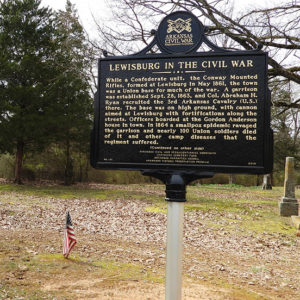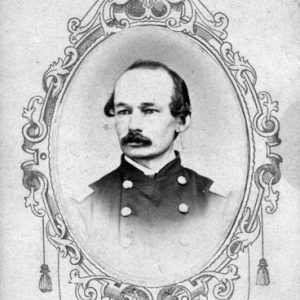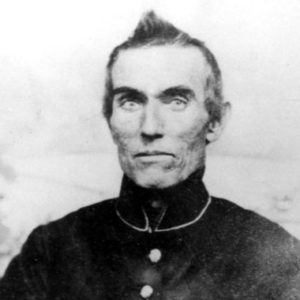calsfoundation@cals.org
Skirmish at Lewisburg
| Location: | Conway County |
| Campaign: | Union effort against guerrillas in the Arkansas River Valley |
| Date: | February 12, 1865 |
| Principal Commanders: | Colonel Abraham H. Ryan (US); Colonel Allen R. Witt (CS) |
| Forces Engaged: | Third Arkansas Cavalry Regiment, Fiftieth Indiana, Eleventh U.S. Colored Infantry (US); Tenth Arkansas Infantry (CS) |
| Casualties: | Unknown |
| Result: | Union victory |
Lewisburg (Conway County), a thriving town in the 1860s, was the site of a significant occupation force of Union troops during the Civil War. Located about fifty miles west of Little Rock (Pulaski County), it was the first and most significant river port along the way to Fort Smith (Sebastian County) and Indian Territory. Federal troops under the command of General Frederick Steele raised the U.S. flag there on September 28, 1863, and remained there as an occupation force until August 1865.
As Conway County had divided interests and loyalties, two Union companies were raised there soon after the Rebels abandoned their relatively unprotected positions in late 1863. These units were assigned to the newly formed Third Arkansas Regimental Cavalry Regiment and the command of Colonel Abraham H. Ryan, who led the occupation to its completion. During the period, there was considerable guerrilla activity in the area, resulting in savage killings and brigandage along the roadways near Lewisburg. Many of these engagements were associated with a Confederate scouting group led by Colonel Allen R. Witt and his Quitman Rifles, a unit of the Tenth Arkansas Cavalry.
Associated with Col. Ryan’s Third Arkansas Cavalry Regiment were those local Union troops under the command of Captain T. Jeff Williams. Known as an Independent Union Company of Scouts and Spies, they were sometimes called Williams’ Raiders. This unit was used to patrol local areas and to escort supply trains and troop movements in the area. There were frequent conflicts and skirmishes between the Witt and Williams forces. Being local, both groups knew the major roadways and the smaller connectors that were used for both ambush and escape.
While these “run-ins” had taken place since early in the war, things changed dramatically on February 12, 1865. A routine encounter along the Lewisburg-Dover Road became a full skirmish, as a reinforced Union force, supported by the Fiftieth Indiana and the Eleventh U.S. Colored Infantry at Lewisburg and led by Col. Ryan, destroyed the main elements of the Tenth Arkansas Infantry. However, Col. Witt and about thirty of his men escaped and rode north to the Center Ridge (Conway County) community and fulfilled their final objective of the war. They rode to the residence of Capt. Williams, called him out, and shot him as he stood in his front doorway. After the Williams family took their revenge on the Witt group by killing more than half of the remaining members, the conflicts of the Civil War in Conway County finally ceased.
For additional information:
Barnes, Kenneth C. “The Williams Clan: Mountain Farmers and Union Fighters in North Central Arkansas.” In Civil War Arkansas: Beyond Battles and Leaders, edited by Anne J. Bailey and Daniel E. Sutherland. Fayetteville: University of Arkansas Press, 2000.
Dirck, Brian. “Witt’s Cavalry: An Arkansas Guerilla Unit.” Faulkner Facts and Fiddlings 36 (Fall/Winter 1994): 63–76.
Goad, Michael. “Impact of the Civil War on the Farmers of the Arkansas River Valley and Northwest Arkansas.” stellarone.com. http://stellar-one.com/civil_war/impact_of_civil_war_on_ar_river_valley_farmers.htm (accessed May 13, 2022).
The War of the Rebellion: A Compilation of the Official Records of the Union and Confederate Armies. Series I, Vol. 48, Part I, p. 111. Washington DC: Government Printing Office, 1896.
Larry Taylor
Springfield, Arkansas
 Military
Military ACWSC Logo
ACWSC Logo  Lewisburg Marker
Lewisburg Marker  Abraham Ryan
Abraham Ryan  Jeff Williams
Jeff Williams 




Comments
No comments on this entry yet.